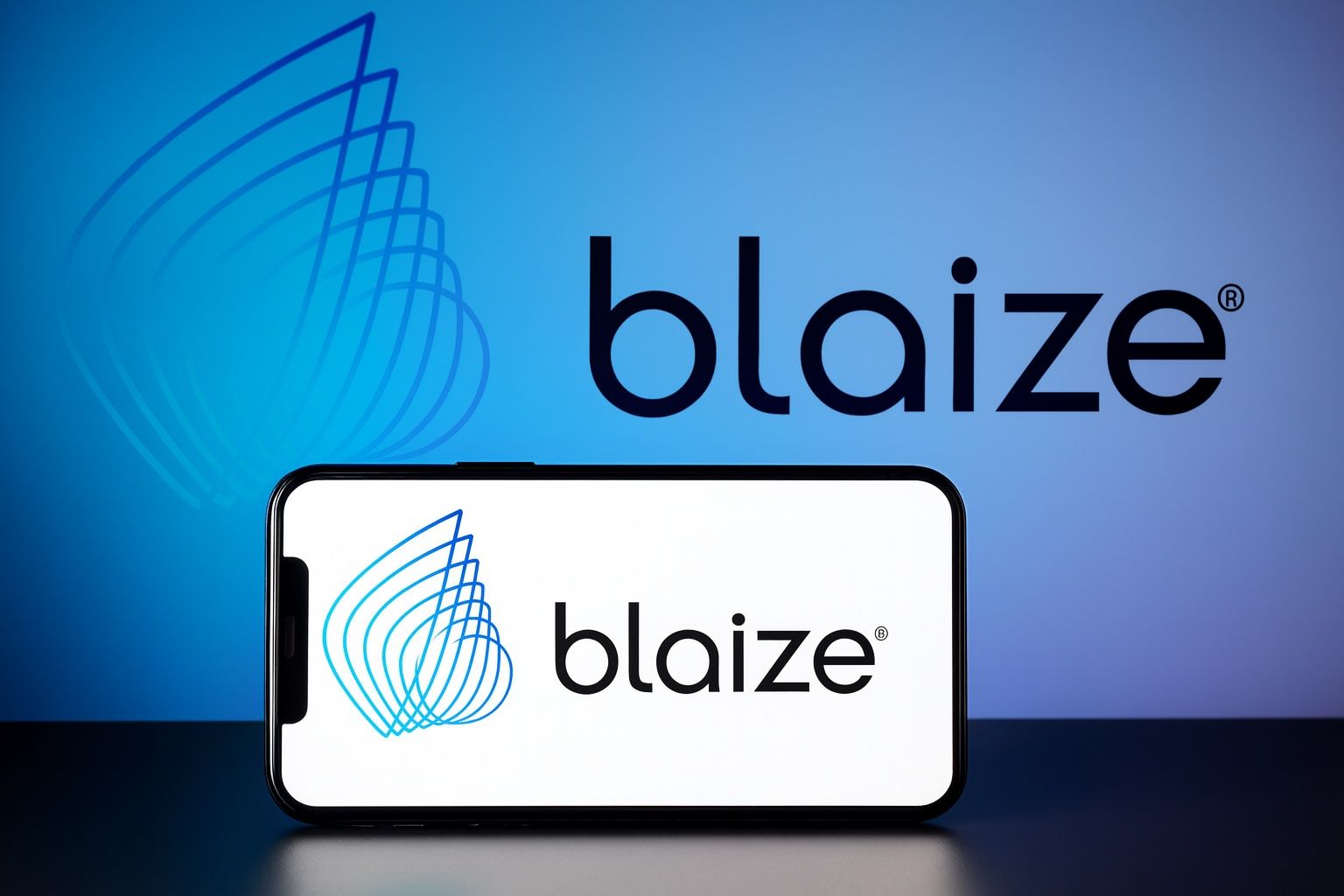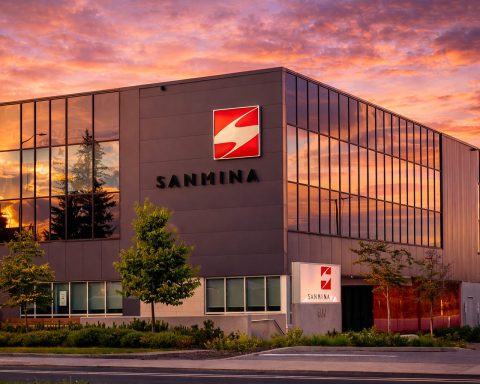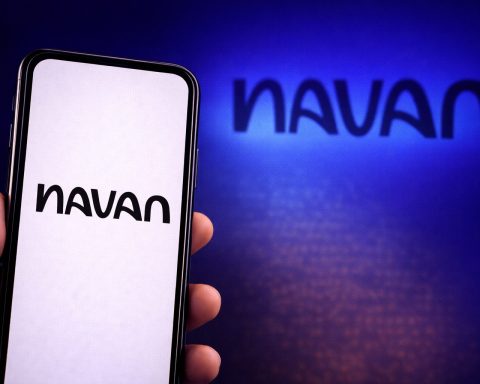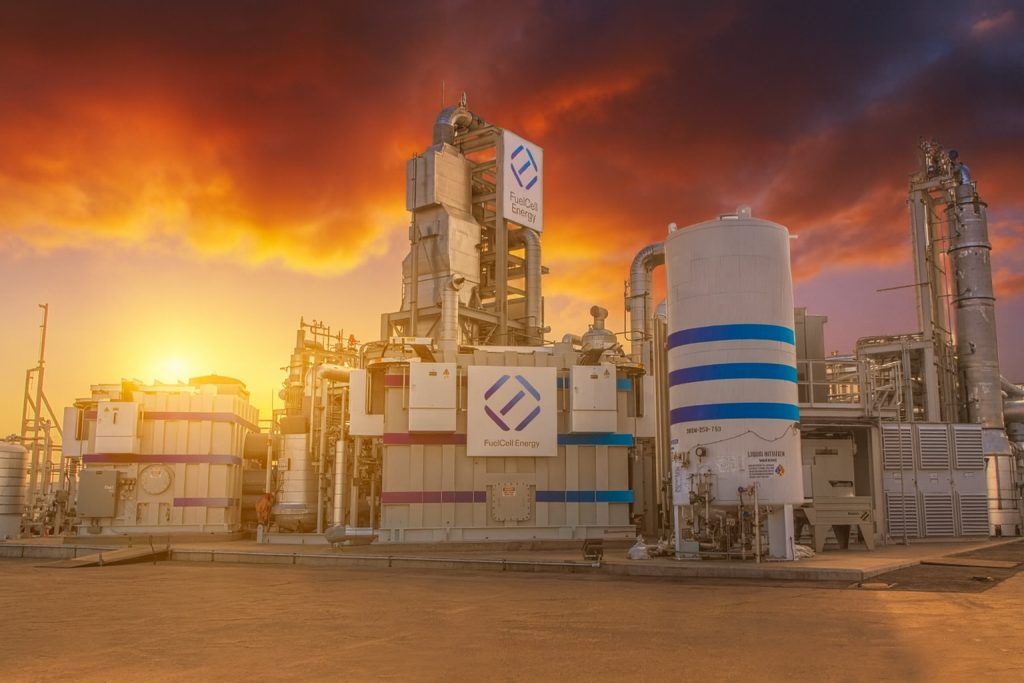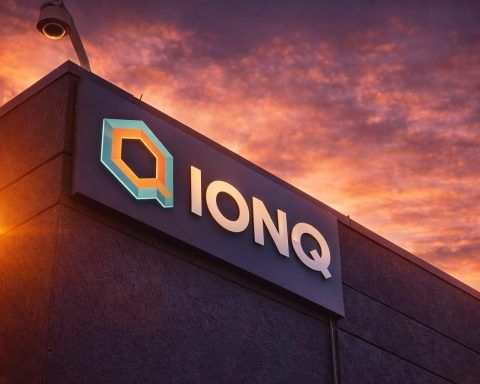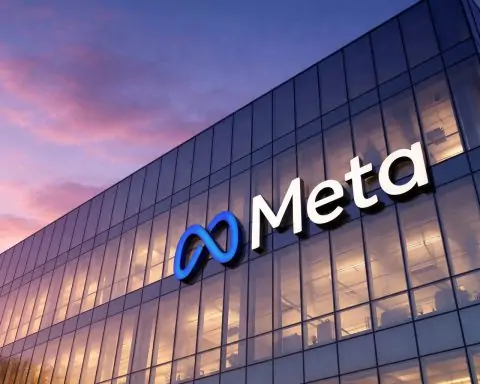- Stock Spike in Mid-October: Blaize Holdings’ stock traded around $5.9 on October 15, 2025, after a sharp rally of roughly 45% over the past two weeks [1]. The volatile shares remain far below their 52-week high of $19.25 (hit amid post-IPO hype) despite the recent rebound [2], reflecting past swings from a low of $1.70 to a brief early-year peak [3].
- Major AI Deals Fueling Momentum: Since going public in January, Blaize has secured about $176 million in AI contracts across Asia. This includes a $56 million edge-AI smart city surveillance rollout in South Asia and a $120 million hybrid AI infrastructure deal spanning multiple Asian countries (with partner Starshine Computing) [4]. These wins have dramatically expanded Blaize’s sales pipeline (now cited at $725 million through 2027) and underpin its aggressive revenue guidance of $35–38 million for 2025 [5] – a massive jump from just ~$3.8M in revenue last year.
- Strategic Partnerships & Global Expansion: Blaize is rapidly extending its international footprint. It partnered with Saudi Arabia’s Technology Control Company (TCC) to build next-generation AI infrastructure and accelerate “smart” digital transformation across the kingdom [6]. The company is also showcasing its edge AI innovations at GITEX 2025 in Dubai (Oct 13–17) – the world’s largest tech event – underscoring its push into global markets and emerging regions [7].
- Analyst Sentiment: Bullish Upside vs. New Skeptics: Market opinion is cautiously optimistic. This week, Weiss Ratings reaffirmed a low “D-” (Sell) grade on BZAI [8], flagging a negative outlook. However, at least five Wall Street analysts rate Blaize a Buy or Strong Buy, versus just one Sell, and the consensus 12-month price target is ~$7.5 – implying significant upside from current levels [9] [10]. Some analysts argue the stock is undervalued given its deal pipeline, with one estimate suggesting a fair value around $12 if management executes on growth plans [11].
- Edge AI Chipmaker in a Crowded Field: Blaize, founded by former Intel engineers, became the first AI chip startup to IPO in 2025 via a SPAC merger [12]. Its focus is on energy-efficient AI processors for edge devices – embedding AI into cameras, drones, cars and more – rather than competing head-on in data-center chips dominated by NVIDIA [13]. This niche strategy pits Blaize against other edge-AI upstarts (Hailo, Kneron, etc.) and giants like NVIDIA and Qualcomm adapting their chips for the edge. Blaize remains a small player (still unprofitable, with ~$2M quarterly revenue [14]) striving to leverage its head start in “at-the-edge” AI computing to grow alongside booming industry demand.
Stock Surges on AI Hype and Contract Wins
Blaize’s stock has been on a rollercoaster since its January Nasdaq debut. After an initially steep slide, BZAI shares have recently skyrocketed on the back of big AI contract announcements. The stock doubled in a single day in July after Blaize revealed a $120 million Asian infrastructure deal with Starshine Computing [15]. On that news, BZAI jumped from the mid-$2 range to over $5 per share, a 71% one-day surge to ~$5.18 by market close [16]. A few months later, on September 30, Blaize announced that its AI platform is powering Yotta Data Services’ massive edge AI initiative in India – confirming Yotta as the end-customer for Blaize’s $56M contract. The market response was swift: BZAI spiked nearly 37% that day on heavy volume [17], reflecting excitement over Blaize’s technology being deployed across a huge real-world project.
As of October 15, 2025, Blaize’s stock is hovering around $5.9 – up dramatically from its summer lows near $2–3. Year-to-date the share price has climbed roughly 65–70%, vastly outperforming the broader market [18]. This rally has pushed BZAI well above its 50-day and 200-day moving averages (around $3.72 and $3.09, respectively) [19], indicating strong positive momentum. Technical indicators show the stock nearing overbought levels – for instance, its RSI has risen into the mid-70s [20] – and chart analysts note BZAI now sits at the upper end of its short-term rising price channel [21]. In fact, in the last session before Oct 15, the stock swung wildly (intraday low $4.52, high $5.10) before closing up 2.2% at $5.01 [22]. The steep climb and double-digit daily volatility underscore that investors are trading Blaize on speculative AI enthusiasm, making for a “very high risk” profile in the near term [23]. Some short-term consolidation or profit-taking wouldn’t be surprising after such a rapid run-up, especially with one technical analysis service warning that BZAI’s price is at a possible inflection point (the stock “lies in the upper part” of its trend and could pull back absent fresh catalysts) [24].
Despite those risks, the bullish case for Blaize is centered on its recent deal wins and growth narrative. Each major contract announcement has injected fresh confidence – and volatility – into the stock. Traders have been quick to bid up BZAI on any news that validates the company’s commercial traction, given Blaize’s tiny revenue base until now. However, the flipside is that any sign of execution issues or overvaluation could spark sharp reversals. Notably, even after recent gains, Blaize’s stock is still down roughly 40% from its January opening trade and about 70% below the ~$19 highs it briefly touched in early 2025 [25]. That earlier spike and collapse came as the initial SPAC euphoria gave way to reality – BZAI fell over 70% in its first months, “a tough start to life in the markets,” as one analyst noted, before these new AI tailwinds helped it rebound [26]. This context is a reminder: Blaize’s story is promising but the stock’s journey has been anything but smooth, and more big swings could lie ahead.
Big Contracts Validate Blaize’s AI Technology
The core driver of Blaize’s recent surge is the pair of marquee deals in Asia that the company landed in 2025 – contracts that dwarf its historical revenue and signal real market adoption of its edge-AI chips. In late June, Blaize announced it had secured a $56 million deployment in South Asia focused on smart city surveillance. Details revealed on September 30 confirmed that Yotta Data Services, an Indian data center and cloud company, is the end customer for this initiative [27]. Under the partnership, Blaize’s AI hardware and software platform will power Yotta’s new video analytics infrastructure, aiming to transform public safety across India. The project is massive in scope: retrofitting and connecting over 250,000 surveillance cameras with AI capabilities [28]. By moving video analytics to the edge (on-site at camera networks and local hubs), Yotta can offer “video surveillance as a service” (VSaaS) with real-time analytics for traffic management, license plate recognition, and security monitoring [29] [30]. The rollout began earlier this year and will continue through 2026, first in India and then expanding to the Middle East as Yotta scales the platform [31].
Both companies have emphasized the strategic importance of this collaboration. “Our work with Blaize is accelerating, and we’re excited to build on this momentum into next year,” said Yotta co-founder Darshan Hiranandani, praising Blaize’s edge AI platform for its flexibility and performance [32]. Blaize’s CEO Dinakar Munagala similarly hailed the Yotta deal as “a new chapter in hybrid AI infrastructure” – one that “brings programmability, intelligence, and security to scale” for smart cities [33]. According to Munagala, by integrating Blaize’s low-power AI processors with Yotta’s digital infrastructure, the partnership is “delivering real-time analytics for public safety in India” while establishing “a scalable model that can be replicated worldwide” [34]. In other words, Blaize views this project as a showcase that could open doors to similar deployments in other regions if all goes well.
Even larger in dollar value is Blaize’s second big win: a $120 million contract with Starshine Computing Power Technology to deploy Blaize’s hybrid AI platform across Asia-Pacific. Announced in mid-July, this deal is an 18-month engagement (starting in fiscal Q3 2025) to build out scalable edge AI infrastructure in some of APAC’s fastest-growing economies [35] [36]. Starshine, based in Hong Kong, provides AI and cloud computing solutions – and it’s leveraging Blaize’s technology to help APAC countries implement AI for smart cities, industrial automation, and public services [37] [38]. The deployment will target a slew of key countries (including India, Indonesia, Japan, South Korea, and China) with use cases tailored to each nation’s AI infrastructure priorities [39]. Essentially, Blaize and Starshine plan to integrate Blaize’s edge AI chips and software into national and city-level projects – everything from traffic systems and autonomous infrastructure to climate and security applications – in a way that can be scaled region-wide.
This Starshine partnership is being touted as a game-changer for Blaize. “This is the beginning of real-world AI infrastructure at scale,” CEO Munagala said of the deal, highlighting that “Asia represents a $112 billion opportunity for next-generation intelligent systems, and inference is leading the charge” [40]. By “providing sovereign-grade infrastructure” for AI alongside Starshine, Blaize aims to become the backbone of smart city and industrial AI deployments across Asia [41]. In practical terms, Blaize’s Graph Streaming Processor chips and software will be embedded in local data centers and edge devices, enabling real-time processing of video, sensor, and IoT data with minimal power usage. The $120M contract guarantees Blaize a huge revenue stream through late 2026 [42], assuming milestones are met – remarkable for a company that previously had annual sales under $4M. It’s no wonder that investors bid the stock up so sharply on this news. With one stroke, Blaize’s backlog went from nearly nothing to one of the largest deals ever signed by an AI chip startup of its size.
Together, the Yotta and Starshine deals not only validate Blaize’s technology in real-world settings but also lend credibility to its lofty growth forecasts. Blaize’s leadership has often cited a robust sales pipeline in investor presentations; now we see concrete proof of that pipeline converting into contracts. The two deals alone total $176 million, aligning closely with management’s guidance that 2025 revenue will ramp into the mid-8-figures and setting the stage for an even bigger 2026 [43]. In its Q2 financial release, Blaize revealed a global opportunity pipeline worth $725 million through 2027 (including defense, smart city and automotive prospects), and it tightened its FY2025 revenue forecast to $35–38 million [44] – up exponentially from last year’s $3.9M. Achieving those targets will depend on executing these new contracts. But at least on paper, the math checks out: Blaize expects Q3 2025 revenue of $11–11.5M and likely an even larger jump in Q4 as the Yotta/Starshine deployments ramp up [45]. If those milestones are hit, Blaize would end 2025 within its guidance range, and investors will feel the company is delivering on its promises. This makes the upcoming quarters absolutely pivotal – a point we’ll return to when discussing forecasts.
New Partnerships and Global Ambitions
Beyond the headline contract wins, Blaize has been actively forging partnerships and raising its profile on the global stage – moves aimed at solidifying its position as a go-to provider of edge AI solutions worldwide. One notable alliance came in mid-September, when Blaize announced a strategic partnership with Technology Control Company (TCC) in Saudi Arabia [46]. TCC is a leading tech integrator in the Kingdom, and together the companies plan to “power Saudi Arabia’s next-generation AI innovation infrastructure.” The collaboration will combine Blaize’s hardware/software expertise in hybrid AI with TCC’s regional reach and customer relationships to deploy energy-efficient, secure AI systems across various Gulf industries [47]. In practice, this means co-developing AI applications for things like public safety, smart infrastructure, and government services, as well as joint training programs to build local AI talent [48]. For Blaize, the partnership is a foothold into the Middle East – a fast-growing market investing heavily in AI (Saudi Arabia, for example, has a national strategy to be a global AI leader by 2030). It also shows Blaize’s strategy of teaming up with in-country partners to accelerate adoption of its technology in new regions. The TCC deal follows a similar pattern to Starshine and Yotta: align with an established local player to integrate Blaize’s edge AI platform into large-scale projects (in this case, national infrastructure in the Gulf).
At the same time, Blaize has been making the rounds at major tech events and summits, signaling its intent to be a prominent name in the AI hardware sector. This week, the company is exhibiting at GITEX Global 2025 in Dubai (Oct 13–17) – one of the world’s largest technology expos, which draws top tech companies, startups, and government delegations from around the globe [49]. Blaize’s booth is showcasing its latest edge AI computing solutions, demonstrating how its programmable chips can deliver high-performance AI processing with minimal power draw in edge devices. The timing is apt: with its new contracts in Asia and partnerships in the Middle East, Blaize can capitalize on the GITEX platform to attract potential customers and investors from Europe, Asia, and the GCC region. Since going public at the start of the year, Blaize has accelerated its large-scale hybrid AI deployments with major contract wins worldwide, the company noted in its GITEX announcement, pointing to the $56M Southeast Asia deal and $120M Asia deal, plus the Saudi partnership as evidence of its momentum [50]. Being featured at events like GITEX (and earlier, the Milken Institute Asia Summit in Singapore on Oct 1 [51]) helps Blaize build brand recognition in the industry and potentially ink new deals. It’s also an opportunity for management to update the market on progress. For instance, at the Milken Summit Blaize’s CEO Dinakar Munagala spoke on a panel about AI innovation at scale in India, undoubtedly referencing the Yotta project and how Blaize’s solutions fit into India’s digital expansion [52].
In addition to geographic expansion, Blaize has been rolling out new product offerings to broaden its appeal. In August, the company launched the Blaize AI Studio and AI Software Platform, a suite of tools that allows developers to easily deploy AI models on Blaize’s silicon [53]. It also introduced a new server solution in partnership with Supermicro – a 1U rack server packed with 24 Blaize Xplorer X1600 accelerator modules – delivering high-density AI inference for enterprise and edge data centers [54]. This push into software and turnkey systems is strategic: Blaize isn’t just selling chips, but a full-stack solution (hardware + software) that can plug into existing infrastructure. By making its platform more accessible (even to “non-expert” AI developers, through low-code tools), Blaize can drive adoption among a broader customer base who need AI at the edge but lack deep AI chip design expertise [55] [56]. The goal is to cement Blaize’s reputation as a leader in “programmable, energy-efficient edge AI computing”, a phrase that appears in nearly all of its press releases [57]. In practical terms, that means chips and software that can be customized to different AI tasks (vision, analytics, etc.) and deliver results instantly on-site – whether in a smart camera, an autonomous drone, or a mobile network tower – all while using far less power than a typical GPU or server chip.
Taken together, these partnerships, events, and product initiatives paint a picture of a company rapidly scaling up its reach and capabilities. Blaize is building an ecosystem around its technology: aligning with big regional partners (like TCC, Starshine) for distribution and integration, collaborating with hardware makers (Supermicro) and software vendors to support its platform, and engaging with governments and industry forums to shape the future of edge AI deployments. For a small-cap company, Blaize is punching above its weight on the global stage. This global ambition is likely a selling point to investors who see Blaize as a potential “pick-and-shovel” provider for the AI revolution outside the data center. However, it also comes with execution challenges – coordinating multiple large projects across continents is no small feat for a firm of Blaize’s size (around 230 employees [58]). The coming months will test Blaize’s ability to deliver results concurrently in India, across APAC, and in the Middle East. Success could establish Blaize as a true international player in AI infrastructure; hiccups could strain its limited resources.
Market and Analyst Perspectives
The buzz around Blaize has attracted the attention of market analysts and industry experts, who offer a mix of optimism and caution on the company’s prospects. Wall Street’s overall stance on BZAI is moderately bullish, reflecting the company’s high-growth potential tempered by its risks. According to MarketBeat data, Blaize currently has one Strong Buy, four Buy, one Hold, and one Sell rating from analysts – yielding a consensus rating of “Moderate Buy.” The average 12-month price target is roughly $7.60 per share [59] [60], about 25% above the Oct 15 trading price. Analysts at firms like Rosenblatt Securities and B. Riley initiated coverage on Blaize in recent months with Buy ratings and price targets ranging from $6 to $9 [61], signaling confidence that the stock can appreciate as the company executes on its contracts. These bullish analysts often point to Blaize’s unique positioning in the fast-growing edge AI segment and its surge of contract wins as justification for a higher valuation. For instance, one Seeking Alpha contributor highlighted that Blaize’s new deals (totaling $174M) lend credibility to its revenue guidance and that the stock still trades at a discount relative to those future sales. They note that at around $5, Blaize was valued at ~$500M market cap – about 5 times the Starshine + Yotta contract value – whereas successful execution could warrant a significantly higher multiple. By at least one estimate, Blaize’s “fair value” could be near $12 (more than double current levels) if the company hits its revenue targets and the market applies a ~10x price-to-sales ratio common for high-growth tech stocks [62]. This kind of upside case hinges on Blaize transitioning from essentially a pre-revenue startup to an established supplier with tens of millions in annual sales and a clear path to profitability.
Not all experts are convinced, however. The skeptics emphasize Blaize’s execution risks, competition, and still-heavy losses. On October 14, Weiss Ratings issued a blunt “D-” grade (equivalent to a Sell) for Blaize [63]. Weiss Ratings – known for quantitative models – signaled a negative outlook on BZAI’s stock performance, likely factoring in the company’s dilutive share issuances (common for SPACs) and the uncertainty of hitting aggressive financial targets. It’s worth noting that despite that failing grade, Weiss is something of an outlier; most covering analysts lean positive, as noted above. Still, the presence of a Sell rating underscores that Blaize is far from a sure thing. Similarly, investment research platform AAII recently advised caution after Blaize’s stock ran up (they noted BZAI was up ~17% in early October but warned retail investors not to chase the rally blindly) [64]. And in an analysis titled “New AI Deals, But Q4 Is The Real Test,” Seeking Alpha contributor Leo Imasuen argued that while Blaize has surged on AI momentum, the company now “faces a critical test to deliver on [its] aggressive FY25 revenue guidance of $35–38M” [65]. In other words, the hype now must meet reality: Blaize has made big promises to the market, and failure to achieve them (or any sign of delays in those contracts) could quickly sour sentiment. The next checkpoint will be the Q3 earnings report (scheduled for November 15, 2025 [66]), where investors will look for evidence that revenue is ramping sharply and that project deployments are on schedule.
Market observers also highlight that Blaize’s stock structure and trading dynamics may amplify volatility. The company went public via a SPAC merger (with BurTech Acquisition Corp.), which often leads to a relatively low float if many original SPAC shareholders redeem shares. Indeed, a huge 97% of Blaize’s shares are currently held by institutions (including SPAC sponsors and PIPE investors) [67]. Such concentrated ownership can mean rapid moves as large holders adjust positions or as small batches of shares trade among retail investors. The 71% single-day jump on the Starshine news, and the stock doubling intraday on some spikes, suggest limited liquidity and high speculative interest. This dynamic can cut both ways: sharp rallies on good news, but potentially steep drops on any disappointments.
Overall, the consensus among analysts is that Blaize has intriguing long-term prospects but remains a speculative bet at this stage. The company is targeting an enormous market (edge AI solutions for everything from smart cities to autonomous vehicles) and has snagged a few impressive early wins. If it can continue this momentum, some on Wall Street believe the stock’s current price doesn’t fully reflect the future earnings potential – hence the Buy ratings and price targets above the current price. However, the path to that future is fraught with challenges: competition from much larger chipmakers, the need to massively scale production and support for deployments, and the fact that Blaize is still losing money each quarter. Investors should expect opinion on BZAI to remain split between believers in the edge AI growth story and those urging caution until the company proves itself over a few more quarters.
Financials, Fundamentals and the Road Ahead
From a fundamental perspective, Blaize is very much in “investment mode” – it’s not yet profitable and is spending heavily to support R&D and business development. However, recent financial results show improvement as the company transitions from R&D into revenue generation. In Q2 2025, Blaize reported revenue of $1.98 million, nearly doubling from the prior quarter (Q1 was ~$1M) [68]. While still very small, this growth reflects initial project revenues kicking in. The net loss in Q2 was $29.6 million, which, although large, was actually a significant improvement from previous quarters (Blaize lost $87.5M in full-year 2023) [69] [70]. Importantly, Blaize’s gross margin was a healthy 64% in Q2 [71], indicating strong unit economics for its products, though management cautioned that gross margin may dip in the next few quarters as they scale deployments. The company had about $29.1 million in cash on hand as of June 30 [72] – enough to fund near-term operations, but likely requiring additional capital in the future if losses continue (which is typical for a young chip company ramping up). On that front, Blaize may have some cushion: it noted that it maintains a “healthy balance sheet with more cash than debt” and a current ratio of 2.43, suggesting decent liquidity for now [73] [74].
Looking ahead, Blaize’s official guidance and long-term outlook are strikingly ambitious. For the full year 2025, the company reaffirmed it expects $35–38 million in revenue [75]. Hitting the midpoint of that range would mean almost a 10× increase over 2024’s revenue (which was $3.86M [76]). It implies a huge ramp in the second half of 2025 – essentially delivering around $30M in Q3+Q4 combined, given first-half sales were under $3M. This explains why analysts call Q4 a make-or-break quarter: the vast majority of Blaize’s annual revenue must materialize in the final few months of the year, likely from initial billings on the Starshine and Yotta projects. Encouragingly, Blaize’s Q3 guidance of ~$11M revenue shows that some of that ramp is already expected by the September quarter [77]. If Q3 comes in at, say, $11.3M, Blaize would need roughly $23–25M in Q4 to hit the full-year target – a steep climb, but plausible if major milestones for Yotta’s camera rollout and the early phase of Starshine’s deployment are achieved.
Beyond this year, Blaize is even more upbeat. Executives have indicated an internal forecast of $105–130 million in revenue for 2026 [78], which would represent roughly triple the 2025 level. This is backed by that $725M pipeline of potential deals through 2027 [79]. In an earnings call, CFO Harminder Gill noted that about $300M of that pipeline consists of “high-confidence” deals expected to close or deploy by 2026 [80] [81]. If those materialize, Blaize could achieve exponential growth over the next two years. “Hybrid AI is no longer just a road map item. It’s in the field, helping to advance national infrastructure and delivering real outcomes,” CEO Munagala said on the Q2 call [82], highlighting that the company’s focus is now on scaling deployments rather than simply proving its tech. He also emphasized that Blaize’s solutions often augment existing infrastructure rather than replace it, which makes adoption easier for customers [83]. This suggests Blaize will try to land additional deals by pitching its platform as a cost-effective upgrade for governments and enterprises that want to add AI capabilities without overhauling everything.
Still, investors should keep an eye on a few key fundamental challenges. First, Blaize will likely need more capital if it’s to fulfill large orders and expand manufacturing – chip companies are capital-intensive. The SPAC merger and associated PIPE gave Blaize a cash infusion, but with R&D and expansion costs high (e.g. Blaize spent $9.6M on R&D in Q2 alone [84]), the cash burn is substantial. The company might pursue additional equity or debt financing in 2026, which could dilute shareholders (some analysts have flagged potential dilution as a risk if operating expenses outpace revenue in the short term [85]). Second, competition and technological risk remain significant. While Blaize is focused on an arguably underserved niche (edge inferencing), big players like NVIDIA, Intel, Qualcomm, and even cloud providers are all developing solutions for edge AI. NVIDIA’s Jetson line, for example, targets AI in robots and IoT; Qualcomm’s Snapdragon platforms are adding AI accelerators for mobile and automotive uses. Blaize will need to stay ahead in efficiency or specialization to fend off these giants. Additionally, startups like Hailo (Israel), Mythic, Kneron, and others are also vying for the title of best edge AI chip. Blaize’s early move to go public gives it a war chest and publicity, but it also puts it under the microscope. Any stumble – a delay in delivering hardware or meeting a project spec – could send potential customers to an alternative provider in this crowded accelerator market.
Finally, it’s worth considering Blaize’s role in the broader AI chip landscape. We’re in a period where AI hardware demand is exploding, and most headlines have been grabbed by data-center chip makers (NVIDIA’s stock soared this year on cloud AI demand, and startups like Cerebras have made news with giant chips for training models). Blaize represents the parallel trend of AI moving “from the cloud to the edge”. “All of the AI hype is happening in the data center… Blaize going public is ultimately a bet on a future where AI chips move from those centralized data centers to being more integrated into physical products,” TechCrunch observed when the company listed [86]. In that sense, Blaize is something of a bellwether for edge AI: its success or failure will be a gauge of how much demand there truly is for dedicated edge AI processing in the next few years. If smart cities, autonomous vehicles, and IoT devices ramp up AI adoption as anticipated, Blaize (and its competitors) could ride a massive wave of growth. If instead the AI revolution remains mostly in the cloud or gets dominated by incumbents extending their reach, Blaize will have a tougher road.
Conclusion
Blaize Holdings has captured investors’ imagination as a small but rising player in the AI chipmaking arena, with its stock surging on the back of transformative deals and a bold vision for AI at the edge. The company’s recent partnerships – from India to Saudi Arabia – showcase the real-world traction that validates its technology, and analysts see substantial upside if Blaize can execute on its multi-million-dollar contracts. Crucially, the next few quarters will likely determine whether Blaize’s story continues as a growth triumph or hits growing pains. The firm must scale revenue almost exponentially to meet its 2025 targets and prove that its edge AI solutions can be delivered on time and on budget. In a sector as dynamic as artificial intelligence, there is both tremendous opportunity and considerable risk. Blaize finds itself at this crossroads: armed with innovative low-power AI chips, backed by blue-chip investors and major customers, but also facing heavyweight competition and high investor expectations. For now, Blaize stands as one of the most intriguing pure-play “edge AI” stocks – one that encapsulates the promise of AI everywhere, from cameras on city streets to drones in the sky. As the company likes to say, it is bringing intelligence “from the edge to the core.” In the coming months, shareholders will be watching closely to see if Blaize can turn that catchy motto into sustainable financial performance [87] [88]. The groundwork has been laid with key deals and partnerships; now it’s up to Blaize to deliver – and if it does, this young AI chipmaker could continue to blaze ahead in an increasingly AI-driven world.
Sources: Blaize Press Releases and Investor Materials [89] [90]; Yahoo Finance/Business Wire [91] [92]; MarketBeat Analyst Report [93] [94]; Seeking Alpha / Buyside Digest Analysis [95] [96]; Investing.com Earnings Summary [97] [98]; TechCrunch Interview [99] [100]; CCTV News (Yotta deal details) [101] [102]; Business Wire (Starshine deal details) [103] [104].
References
1. stockinvest.us, 2. www.marketbeat.com, 3. www.marketbeat.com, 4. www.stocktitan.net, 5. www.stocktitan.net, 6. www.blaize.com, 7. www.stocktitan.net, 8. www.marketbeat.com, 9. www.marketbeat.com, 10. www.marketbeat.com, 11. www.buysidedigest.com, 12. techcrunch.com, 13. techcrunch.com, 14. www.investing.com, 15. finance.yahoo.com, 16. www.rttnews.com, 17. finance.yahoo.com, 18. stockinvest.us, 19. www.marketbeat.com, 20. www.benzinga.com, 21. stockinvest.us, 22. stockinvest.us, 23. stockinvest.us, 24. stockinvest.us, 25. www.marketbeat.com, 26. stockanalysis.com, 27. www.stocktitan.net, 28. www.stocktitan.net, 29. www.stocktitan.net, 30. cctvbuyersguide.com, 31. cctvbuyersguide.com, 32. cctvbuyersguide.com, 33. cctvbuyersguide.com, 34. cctvbuyersguide.com, 35. www.stocktitan.net, 36. www.stocktitan.net, 37. www.stocktitan.net, 38. www.stocktitan.net, 39. www.stocktitan.net, 40. www.stocktitan.net, 41. www.stocktitan.net, 42. www.stocktitan.net, 43. www.stocktitan.net, 44. www.stocktitan.net, 45. www.stocktitan.net, 46. www.stocktitan.net, 47. www.stocktitan.net, 48. www.stocktitan.net, 49. www.stocktitan.net, 50. www.stocktitan.net, 51. www.stocktitan.net, 52. www.stocktitan.net, 53. www.stocktitan.net, 54. www.stocktitan.net, 55. stockanalysis.com, 56. stockanalysis.com, 57. www.blaize.com, 58. stockanalysis.com, 59. www.marketbeat.com, 60. www.marketbeat.com, 61. www.marketbeat.com, 62. www.buysidedigest.com, 63. www.marketbeat.com, 64. www.aaii.com, 65. seekingalpha.com, 66. www.benzinga.com, 67. www.marketbeat.com, 68. www.investing.com, 69. techcrunch.com, 70. www.investing.com, 71. www.investing.com, 72. www.stocktitan.net, 73. www.investing.com, 74. www.investing.com, 75. www.stocktitan.net, 76. stockanalysis.com, 77. www.stocktitan.net, 78. www.investing.com, 79. www.stocktitan.net, 80. www.investing.com, 81. www.investing.com, 82. www.investing.com, 83. www.investing.com, 84. www.investing.com, 85. www.buysidedigest.com, 86. techcrunch.com, 87. www.blaize.com, 88. www.investing.com, 89. www.blaize.com, 90. www.stocktitan.net, 91. www.stocktitan.net, 92. www.stocktitan.net, 93. www.marketbeat.com, 94. www.marketbeat.com, 95. www.buysidedigest.com, 96. stockanalysis.com, 97. www.investing.com, 98. www.investing.com, 99. techcrunch.com, 100. techcrunch.com, 101. cctvbuyersguide.com, 102. cctvbuyersguide.com, 103. www.stocktitan.net, 104. www.stocktitan.net
